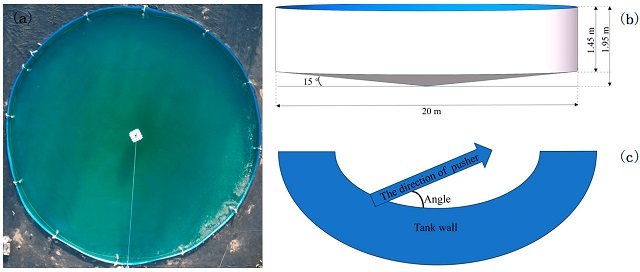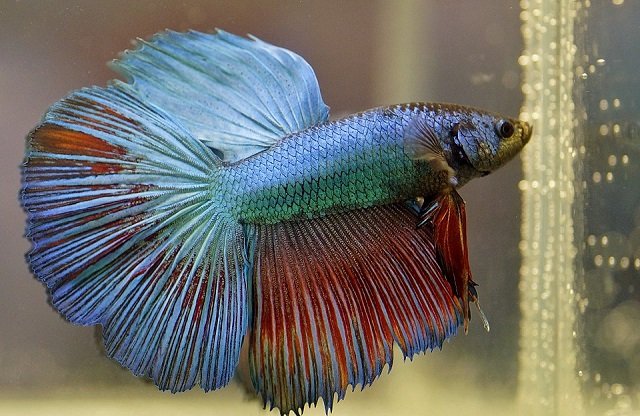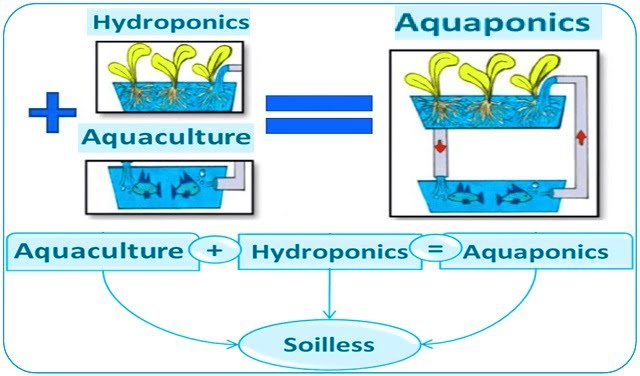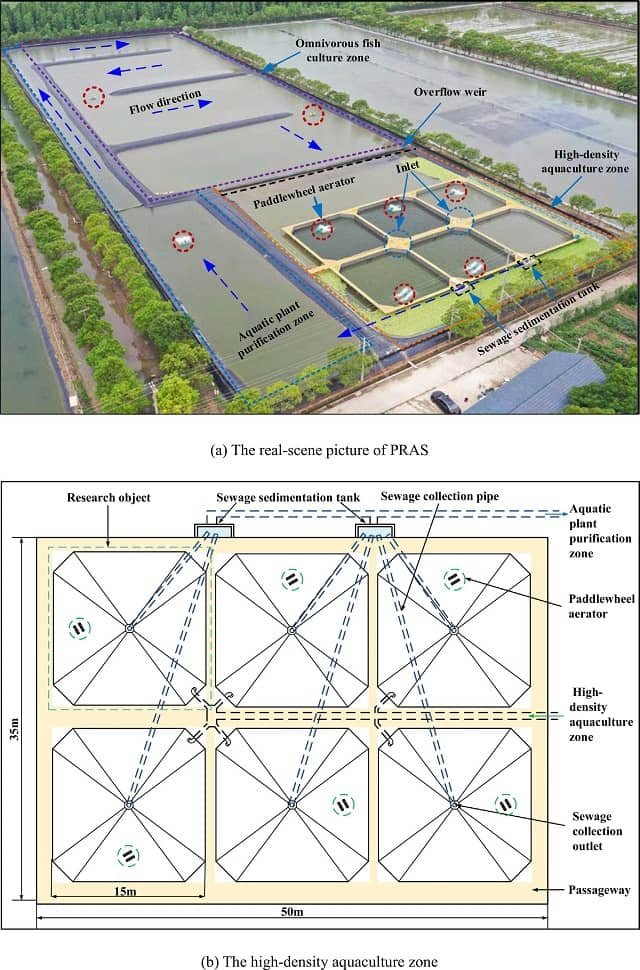
Aquaculture in land-based circular tanks has emerged as a promising model due to its high efficiency, scalability, and effective waste management capabilities.
A recent study published in the Journal of Marine Science and Engineering by researchers from the Beijing Academy of Agriculture and Forestry Sciences and Zhejiang Ocean University delves into the hydrodynamic characteristics of circular tanks, focusing on the impact of water pusher configurations and the presence of fish on flow dynamics and wastewater collection efficiency. This article summarizes the key findings and their implications for optimizing aquaculture systems.
The importance of hydrodynamics in aquaculture tanks
Hydrodynamics play a crucial role in aquaculture systems, directly influencing water quality, fish health, and waste management. Poor hydrodynamic conditions can lead to low-flow zones, resulting in metabolite accumulation, food dispersion, and complications in water quality management. In contrast, optimized flow conditions can enhance water circulation, improve oxygen distribution, and facilitate efficient removal of solid waste.
The study conducted by Wu investigated flow characteristics in large land-based circular tanks, focusing on the effects of water pusher configurations (diameter, deployment angle, and number of pushers) and the presence of fish. The experiments were conducted under two conditions: with and without fish, using Acoustic Doppler Velocimetry (ADV) to measure flow velocities at different tank layers.
Key findings: optimal water pusher configuration
The study identified that the deployment angle of the pusher and the number of pushers had a more significant impact on the flow field and hydrodynamic characteristics than the diameter of the pusher. The optimal configuration for water circulation and wastewater collection was achieved with an 11 cm pusher diameter, a 45° deployment angle, and six water pushers. This setup resulted in improved water circulation, greater aggregation of solid waste, and enhanced overall hydrodynamic performance.
Interestingly, the presence of fish significantly influenced flow field distribution. Fish activity expanded high-velocity flow zones, improving water mixing and waste removal. This finding highlights the importance of considering fish behavior and density when designing and optimizing aquaculture systems.
Impact of pusher diameter and deployment angle
The study also explored the effects of varying the pusher diameter (7.5 cm vs. 11 cm) and deployment angles (0°, 20°, and 45°). While reducing the pusher diameter from 11 cm to 7.5 cm slightly increased surface water flow velocity, it did not significantly enhance overall hydrodynamic performance or wastewater collection efficiency. This suggests that factors such as deployment angle and the number of pushers play a more critical role in optimizing flow dynamics than pusher diameter alone.
When the pusher was deployed at a 45° angle, water flow exhibited optimal circulation, improving both water exchange between layers and sediment accumulation at the tank bottom. This configuration also minimized low-flow zones, ensuring a more uniform flow field distribution.
Stay Always Informed
Join our communities to instantly receive the most important news, reports, and analysis from the aquaculture industry.
The role of fish in flow dynamics
Fish activity was found to significantly alter flow field distribution within the tanks. The movement of fish created localized turbulence, increasing overall turbulence intensity and improving water mixing. This effect was particularly pronounced when the number of pushers was increased, as expanded high-velocity zones facilitated better waste removal.
The study also highlighted that increasing the number of pushers beyond six did not significantly enhance the tank’s hydrodynamic characteristics. In fact, the flow field uniformity coefficient slightly decreased as the number of pushers increased, suggesting that an optimal number of pushers exists to achieve the best hydrodynamic performance.
Practical implications for aquaculture systems
The findings of this study provide valuable insights for optimizing the design and operation of large land-based circular aquaculture tanks. By carefully selecting the pusher diameter, deployment angle, and number of pushers, aquaculture operators can improve water circulation, enhance waste removal, and create a more favorable environment for fish growth.
Additionally, the study emphasizes the importance of considering fish behavior and density in aquaculture system design. Fish activity not only influences flow field distribution but also contributes to the overall hydrodynamic performance of the tank. Future research should explore the effects of varying fish density on flow dynamics and wastewater collection efficiency to further optimize tank design and water quality management.
Conclusion
In conclusion, Wu’s study provides a comprehensive analysis of the hydrodynamic characteristics of large land-based circular aquaculture tanks. The optimal configuration of an 11 cm pusher diameter, 45° deployment angle, and six pushers significantly improved water circulation and wastewater collection efficiency. The presence of fish further enhanced flow field distribution, underscoring the need to consider fish behavior when designing tanks.
These findings offer a solid theoretical foundation for optimizing the hydrodynamic performance of aquaculture systems, contributing to the development of more efficient and sustainable aquaculture practices. As the aquaculture industry continues to grow, such research will be crucial for ensuring the health and productivity of farmed fish while minimizing environmental impacts.
Reference (open access)
Wu, Y., Chen, J., Jia, C., Gui, F., Zhou, Q., Feng, D., & Zhang, Q. (2025). Study on the Flow Characteristics in a Large Land-Based Circular Aquaculture Tank Based on Field Experiments. Journal of Marine Science and Engineering, 13(3), 497. https://doi.org/10.3390/jmse13030497
Editor at the digital magazine AquaHoy. He holds a degree in Aquaculture Biology from the National University of Santa (UNS) and a Master’s degree in Science and Innovation Management from the Polytechnic University of Valencia, with postgraduate diplomas in Business Innovation and Innovation Management. He possesses extensive experience in the aquaculture and fisheries sector, having led the Fisheries Innovation Unit of the National Program for Innovation in Fisheries and Aquaculture (PNIPA). He has served as a senior consultant in technology watch, an innovation project formulator and advisor, and a lecturer at UNS. He is a member of the Peruvian College of Biologists and was recognized by the World Aquaculture Society (WAS) in 2016 for his contribution to aquaculture.




